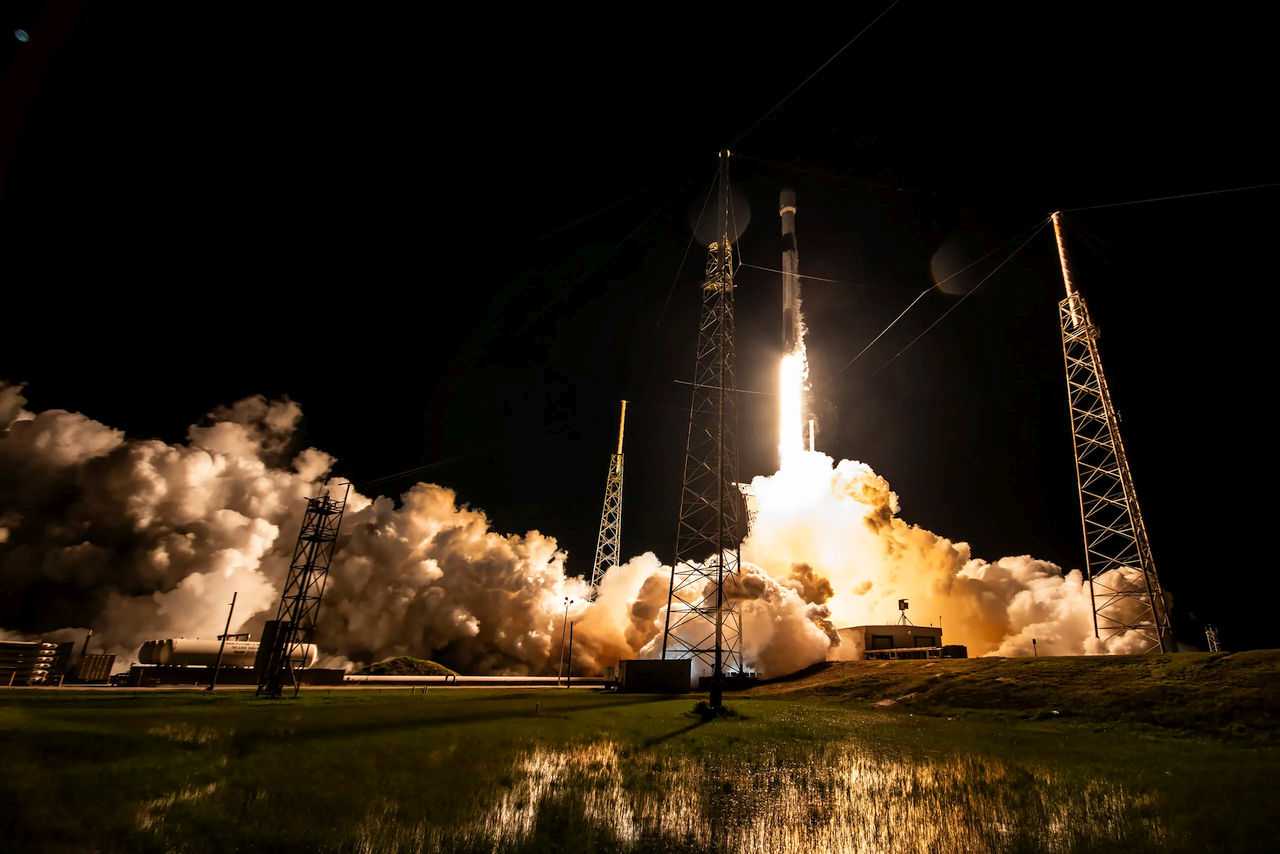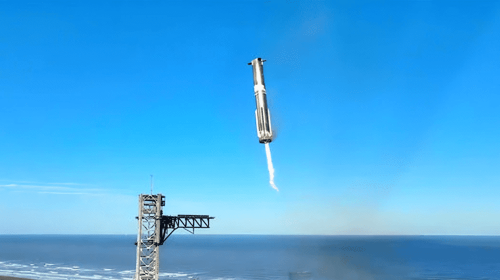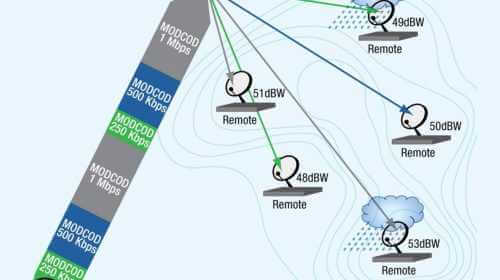Intelsat to Get $5B for Clearing C-Band Spectrum
Aug 04, 2023
Intelsat is on track to receive nearly $5 billion from the Federal Communications Commission (FCC) for clearing the C-band spectrum by launching its final replacement satellite, Galaxy-37/Horizons-4. The satellite was built by Maxar Technologies and launched successfully on a SpaceX Falcon 9 rocket from Cape Canaveral on August 3rd.
Galaxy-37/Horizons-4 separated from the rocket and deployed its solar arrays shortly after launch. It will now take about three weeks for the chemically powered spacecraft to reach its orbital position at 127 degrees West above the equator. Once there, the satellite will undergo final health checks before entering service around the end of September.
 Falcon 9 launches the Galaxy 37/Horizons-4 satellite. Credit: SpaceX
Falcon 9 launches the Galaxy 37/Horizons-4 satellite. Credit: SpaceX
The Galaxy-37/Horizons-4 satellite contains two payloads. Galaxy-37 will provide C-band broadcast services over the continental U.S. for Intelsat’s customers. Horizons-4, co-owned by Intelsat and Japan’s JSAT, will offer Ku-band connectivity over the Pacific and U.S.
According to an Intelsat executive, the company’s other recently launched satellites are operating as intended to migrate broadcast customers to a new C-band portion. Work continues to transition earth stations. With Galaxy-37 now launched, Intelsat looks on target to meet the FCC deadline of December 5th and receive $4.9 billion for clearing frequencies.
Competitor SES announced on August 3rd it has fully completed its own C-band clearing tasks after launching two final satellites on SpaceX rockets in March. SES stands to gain close to $4 billion from the FCC but remains in a dispute with Intelsat over compensation sharing.
In total, SES launched six replacement satellites including a spare. The FCC is reimbursing all operators’ costs for satellites and infrastructure to clear spectrum, using funds from $80 billion raised in 5G spectrum auctions.
Clearing the lower 300MHz of the C-band has been a years-long process to free up spectrum for 5G wireless services. The satellite industry initially pushed back against proposals to repurpose any of the bands they relied on for television distribution and other services.
In 2020, Intelsat, SES, and other operators eventually struck a deal with the FCC to voluntarily clear 280MHz of the C-band spectrum in exchange for incentive payments and reimbursement costs to migrate customers. This allowed the FCC to move forward with auctions to telecom companies starting in 2021. Intelsat and SES combining to clear a total of 8GHz of mid-band spectrum for 5G access represents a major accomplishment and is a sign of the broader trend of satellite operators strategically repurposing existing orbital assets to open up new revenue streams and markets. With the launch of Galaxy-37, Intelsat appears to have smoothly and efficiently executed its transition plan to make way for 5G with minimal disruption to existing broadcast customers and services.
Looking ahead, the successful C-band clearing sets an important precedent that could enable further win-win partnerships between satellite companies and wireless carriers to reallocate additional spectrum for 5G in the United States, as the demand for 5G data capacity is forecasted to grow exponentially in the coming years. Intelsat and SES have demonstrated that, with the proper economic incentives, satellite operators can accelerate the rollout of 5G by vacating certain frequencies while protecting their core businesses.
The FCC’s $8-9 billion investment to clear C-band demonstrates the desire for mid-band spectrum prime for 5G. As mobile data demand continues growing exponentially in the 5G era, regulators may look to future partnerships with satellite operators to access additional spectrum bands to support the rollout of advanced 5G services. The C-band clearing sets an important precedent for repurposing spectrum to balance the needs of satellite and wireless industries. Given the massive forecasts for 5G data usage, the FCC will likely aim to work closely with satellite companies to make more mid-band frequencies available through similar market-based approaches.





